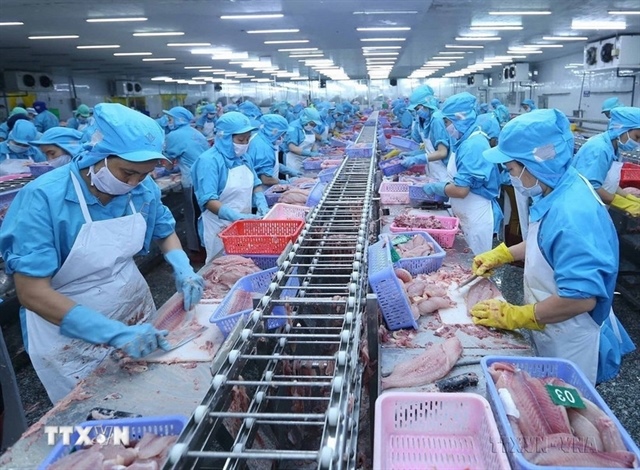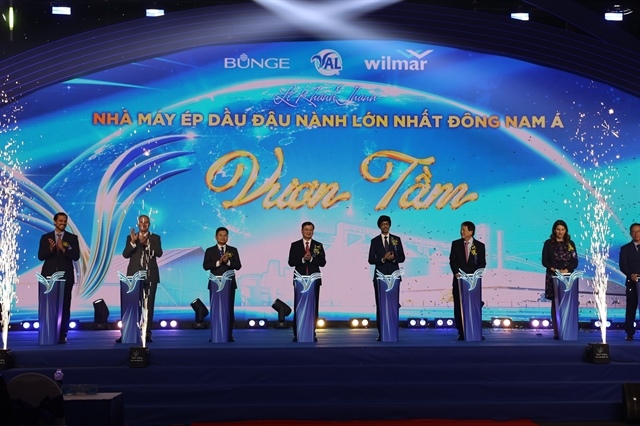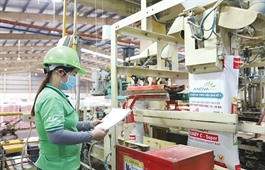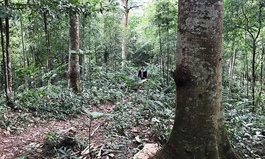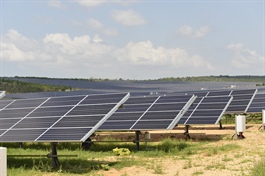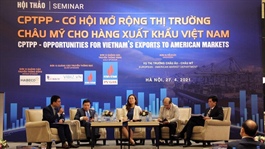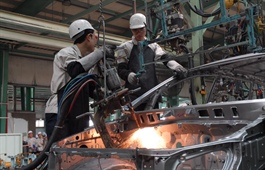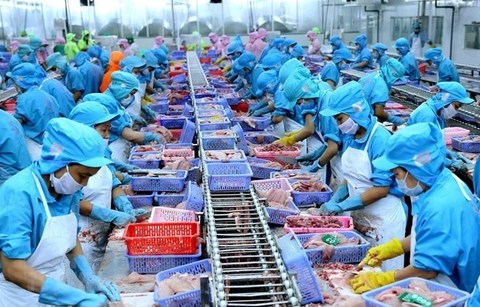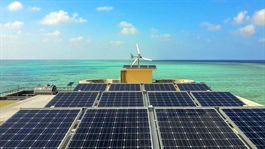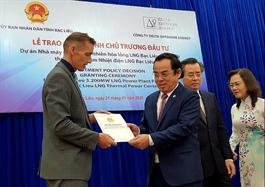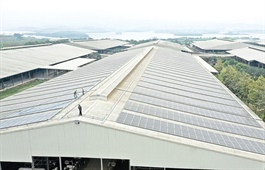Strong DPPA scheme desired
Strong DPPA scheme desired
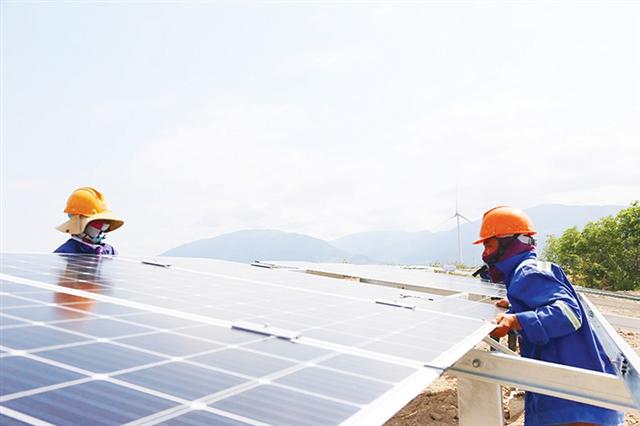
Authorities are pinning hopes on the piloting of a direct purchase model to keep Vietnam on the right track of renewable use and sustainability
|
The reacquisition of a 49-per-cent stake in Trung Nam Thuan Bac solar power plant by A Chau Industrial Technology JSC is considered key to ensure a long-term revenue source. The plant, which began operations two years ago, has the total investment capital of $217.4 million and a capacity of 204MW. Each year the solar power plant provides a maximum power output of 450 million kilowatt-hours, with a selling price of 9.5 US cents per kWh over 20 years.
The share transfer for the plant took place while the Ministry of Industry and Trade (MoIT) has been promoting its ambitious plan to pilot the purchase and sale of electricity directly from renewable energy sources. This is a component of a research project to build a direct power purchase agreement (DPPA) between a renewable energy generator and a power user that the ministry has assigned the Electricity Regulatory Authority (ERAV) to implement since 2017.
Ambitious plan
Nguyen Anh Tuan, director of the ERAV, said that the ERAV is continuing to improve the mechanism for renewable power plants to allow direct sales to electricity users, including price changes. It is expected that direct sales between 200-400MW will be conducted this year.
Such DPPAs are attracting the attention of investors and electricity users. Vietnam intends to adopt a direct selling and buying model through a financial contract, a so-called synthetic PPA.
In this model, the electricity user and the generator will sign a bilateral financial contract in the form of a forward contract with a fixed price and output amount of electricity agreed by the two parties.
Users who purchase electricity from the power corporation pay based on the market price in each cycle. Customers will pay the electricity producer for the direct purchase and sales service for the entire amount of electricity consumed, including costs of transmission, distribution, and system operating costs, as well as transaction management and ancillary service costs.
An appropriate DPPA design will benefit stakeholders, including customers, developers of power projects, and the nation’s economy. DPPAs allow customers – mainly industrial and commercial ones – to target clean, sustainable energy and buy a certain amount directly. Companies generating renewable energy can adopt a long-term bilateral contract with a price and terms agreed between the two parties.
According to the regulations, participants in the pilot phase are power generators that own, manage, and operate renewable energy power plants that are included in the National Power Development Plan VIII (PDP8) with a large capacity of more than 30MW and customers buying electricity of more than 22kV or more for industrial production purposes that are allowed to actively negotiate and agree on electricity purchase and sale prices.
The MoIT plans to pilot this mechanism until the end of 2023 with the total capacity of about 1,000MW. Electricity purchase and sale transactions between related parties are performed directly through the market following regulation on the operation of the competitive wholesale electricity market, issued by the MoIT.
According to the ministry, the official application of this mechanism will be based on the results of the operation of transactions under the DPPA mechanism.
The ERAV will organise an assessment of legal, market, technical, and financial aspects to propose the perfect content of such a DPPA mechanism between renewable energy generators and electricity buyers; and report to local authorities for consideration and decision on the official application of this mechanism.
Lack of originality
The United States is a country cited by the MoIT as an ideal model for the application of DPPAs. In 2008, the US officially applied them based on the promotion of several large corporations such as Google, Microsoft, Apple, and T&T who all committed to increasing the use of renewable energy sources.
By the end of 2018, the total power trading capacity under the DPPA scheme in the US reached over 18,000MW (compared to 650MW in 2008), accounting for about 71 per cent of the total capacity of DPPA projects worldwide in 2018 (25,800MW).
Meanwhile, Europe, the Middle East, Africa, and Asia-Pacific account for about a quarter of the remaining DPPA market, with increases in markets such as Australia, Singapore, and Taiwan.
Vietnam’s conditions are not like those of Taiwan and far behind the US in terms of energy institutions and electricity infrastructure. However, synthetic PPAs are only suitable for markets with developed electricity infrastructures.
While expecting the implementation of the DPPA mechanism, Dr. Nguyen Minh Due, chairman of the Vietnam Energy Association’s Science Council said, “The MoIT only takes into account the introduction of the mechanism but does not mention the infrastructure, power transmission lines, and negotiation mechanisms.”
The fact that the MoIT has not yet given a floor price for negotiation, Due said, is a big problem in the context of high fluctuations in electricity prices between projects inside and outside the PDP8. He said that consumers do not want to buy electricity at high prices, while generators do not want to sell lower than the prices of Electricity of Vietnam (EVN). However, forecasts for the negotiated electricity prices for non-planned projects are only at about 5-6 US cents per kWh. “The time of commercial operation determines the electricity purchase price,” Due commented.
EVN is buying floating solar power at 7.69 US cents per kWh, and terrestrial solar power at 7.09 US cents per kWh. These prices are applied to grid-connected solar power projects whose investors decided to inject cash into the project before the end of November 2019 and have launched commercial operation between July 2019 and the end of 2020.
Similarly, the buying price of wind power on the mainland is 8.5 US cents per kWh, while the price of wind power at sea is 9.8 US cents per kWh. “The level of 9 US cents per kWh over the past 20 years is a good price for renewable power developers,” said Due.
According to his analysis, the expected effects will not reach customers. They will not be able to secure a stable energy supply in the long term and reduce the costs in the future, even when negotiating and fixing the purchase prices of electricity. Further, these customers may also fail to meet global commitments for renewable energy use and sustainable development.
Due further added, “If not carried out appropriately, the economy will not meet the expectations in terms of foreign direct investment attraction, an increase in renewable electricity generation capacity, and a reduction of financial pressures on the government.”
However, the ERAV remains confident that piloting the direct purchase and sale of electricity under the DPPA mechanism is a step to prepare the operation of a competitive electricity retail market, which can contribute to promoting the sustainable development goals in terms of renewable energy sources.



